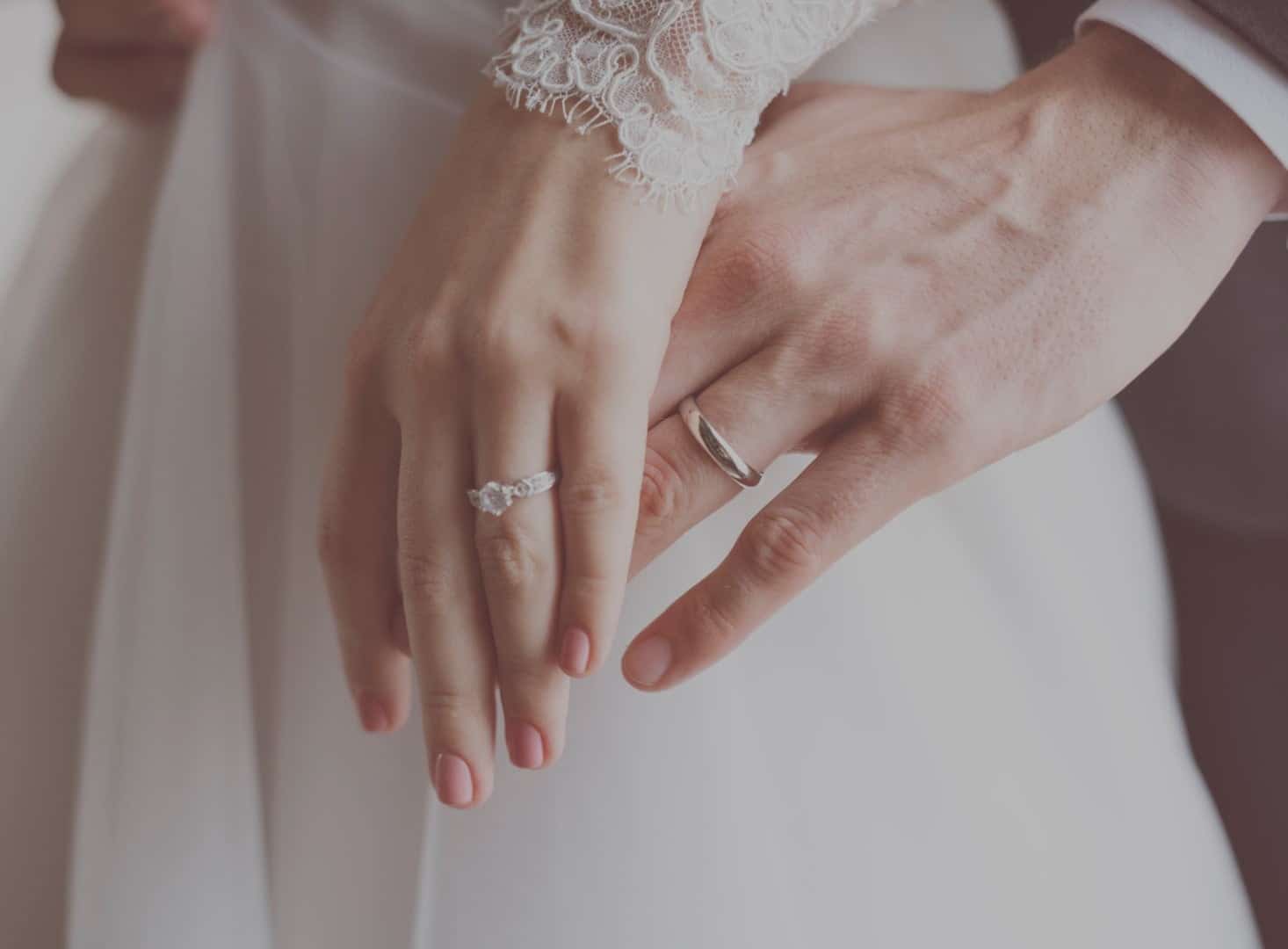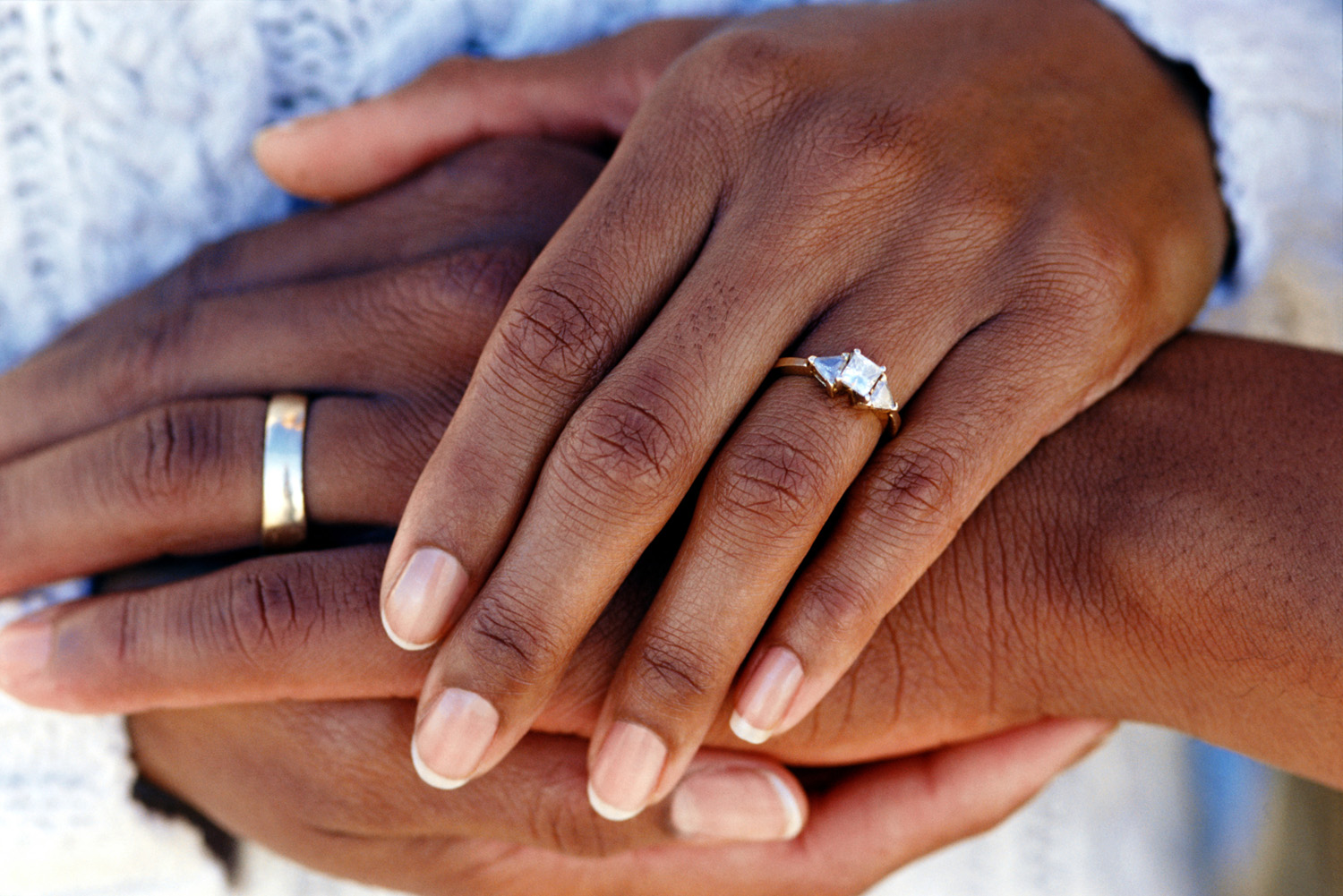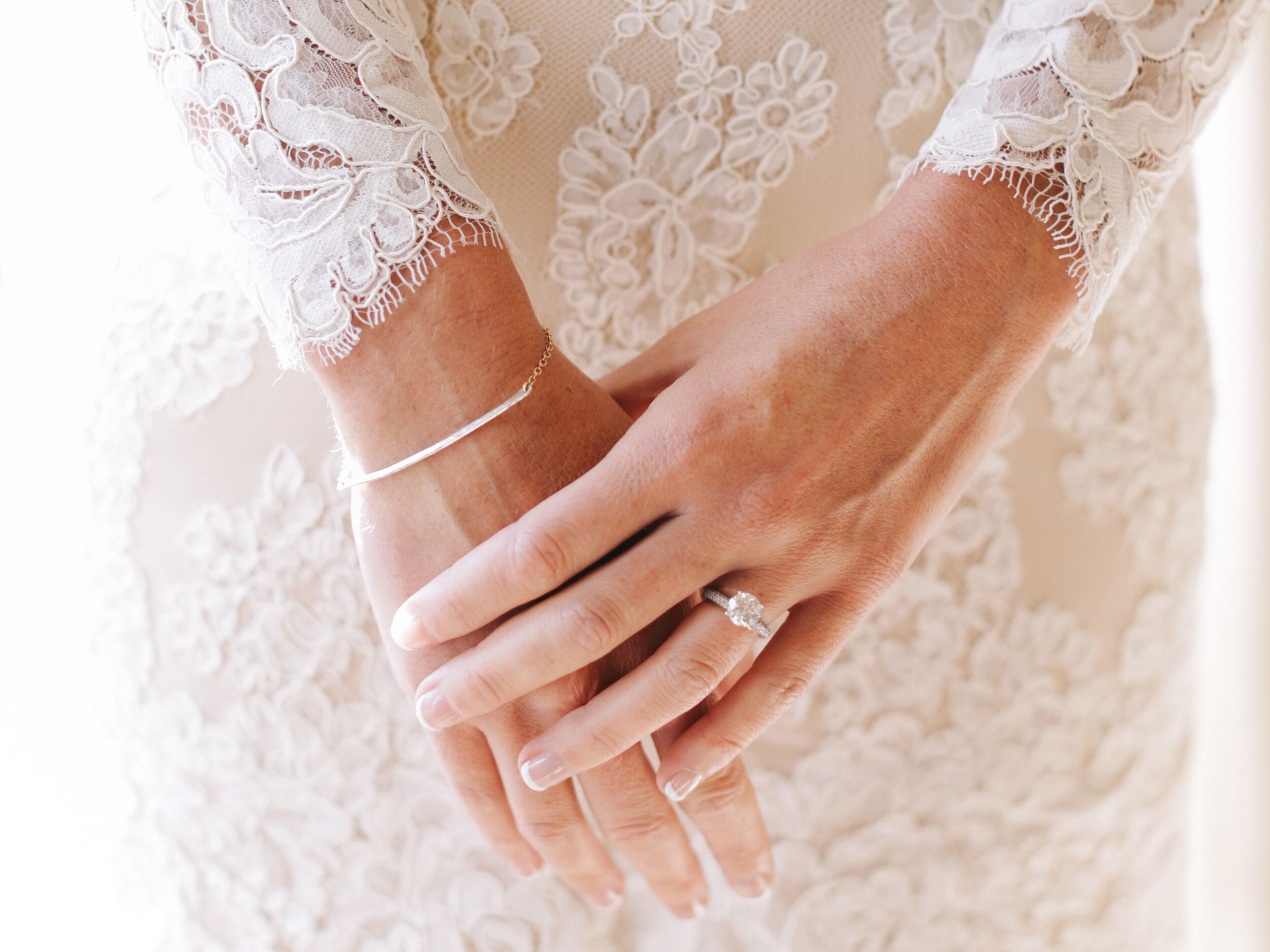Which Hand Should You Wear a Wedding Ring On?

Traditionally, wedding rings are worn on the fourth finger of the left hand. This tradition dates back to ancient Rome, when it was believed that a vein in this finger (the “vena amoris”) led directly to the heart. However, there is no scientific evidence to support this claim.

Today, there is no universal rule about which hand to wear a wedding ring on. In some cultures, it is worn on the right hand, while in others it is worn on the left. Ultimately, the decision of which hand to wear your wedding ring on is up to you and your partner.

Here are some factors to consider when making your decision:
- Tradition: If you want to follow tradition, you can wear your wedding ring on the fourth finger of your left hand.
- Personal preference: If you have a strong preference for wearing your ring on a certain hand, go with that. There is no right or wrong answer.
- Practicality: If you are right-handed, you may want to wear your ring on your left hand so that it does not interfere with your daily activities.
- Style: The style of your wedding ring may also influence which hand you wear it on. For example, a wide band ring may look better on your left hand, while a thin band ring may look better on your right hand.
No matter which hand you choose to wear your wedding ring on, it is a symbol of your love and commitment to your partner.## What Hand Wedding Ring
Executive Summary
The tradition of wearing wedding rings on specific fingers dates back centuries, with each hand and finger holding symbolic meanings. This comprehensive guide explores the cultural, traditional, and personal factors that influence the choice of which hand to wear a wedding ring.
Introduction
The exchange of wedding rings is a timeless tradition that signifies love, commitment, and unity. While the finger and hand on which the ring is worn may seem like a trivial detail, it carries cultural, religious, and personal significance. This guide delves into the various factors that determine the choice of hand for a wedding ring, providing insights and guidance for couples navigating this meaningful decision.
FAQs
-
Which hand is the traditional wedding ring hand?
- In most Western cultures, wedding rings are traditionally worn on the left hand.
-
Why is the left hand the traditional wedding ring hand?
- This tradition originated in ancient Greece, where it was believed that a vein from the left ring finger directly connected to the heart, known as the “vena amoris” (vein of love).
-
Is it acceptable to wear a wedding ring on the right hand?
- While uncommon, it is acceptable in some cultures and may have personal or cultural reasons behind it.
Subtopics
Cultural Significance
- Western Cultures: Traditionally, the left hand is the wedding ring hand due to the belief in the “vena amoris.”
- Eastern Cultures: In many Asian countries, wedding rings are worn on the right hand, symbolizing prosperity and good fortune.
- Jewish Tradition: Jewish couples often exchange rings on the right hand during the wedding ceremony.
Religious Influence
- Christian Faith: Some Christian denominations believe that the left hand represents the sinful nature, while the right hand symbolizes righteousness, making it the appropriate hand for a wedding ring.
- Catholic Tradition: In the Catholic Church, wedding rings are typically worn on the right hand during the ceremony and then moved to the left hand after the marriage has been blessed.
- Islamic Culture: In Islamic tradition, wedding rings are not mandatory but are often worn on the right hand of the bride.
Personal Preference
- Comfort and Practicality: Some individuals may choose the right hand for their wedding ring due to comfort or practicality, such as being left-handed or involved in manual labor.
- Fashion Statement: Wedding rings have become increasingly fashionable accessories, and some couples may choose to wear them on the right hand for aesthetic reasons.
- Tradition vs. Individuality: While tradition plays a role, couples may ultimately decide on the hand for their wedding ring based on their personal preferences and beliefs.
Gender Considerations
- Male Wedding Rings: Traditionally, men have worn wedding rings on the left hand in Western cultures.
- Female Wedding Rings: Women typically wear their wedding rings on the left hand in most cultures, but there may be variations based on personal preference or cultural norms.
- Same-Sex Marriages: Same-sex couples may choose to wear their wedding rings on either hand, depending on their personal preference or cultural influences.
Historical Evolution
- Ancient Egypt: Wedding rings were first introduced in ancient Egypt and were worn on the left hand.
- Middle Ages: In medieval times, knights wore rings on their right hand as a symbol of chivalry.
- Modern Era: Wedding ring traditions have evolved over time, with the left hand remaining the dominant choice in Western cultures.
Conclusion
The decision of which hand to wear a wedding ring is a personal one, influenced by a combination of cultural, religious, and individual factors. While tradition and symbolism play a significant role, ultimately, couples should choose the hand that best represents their love, commitment, and personal style.






